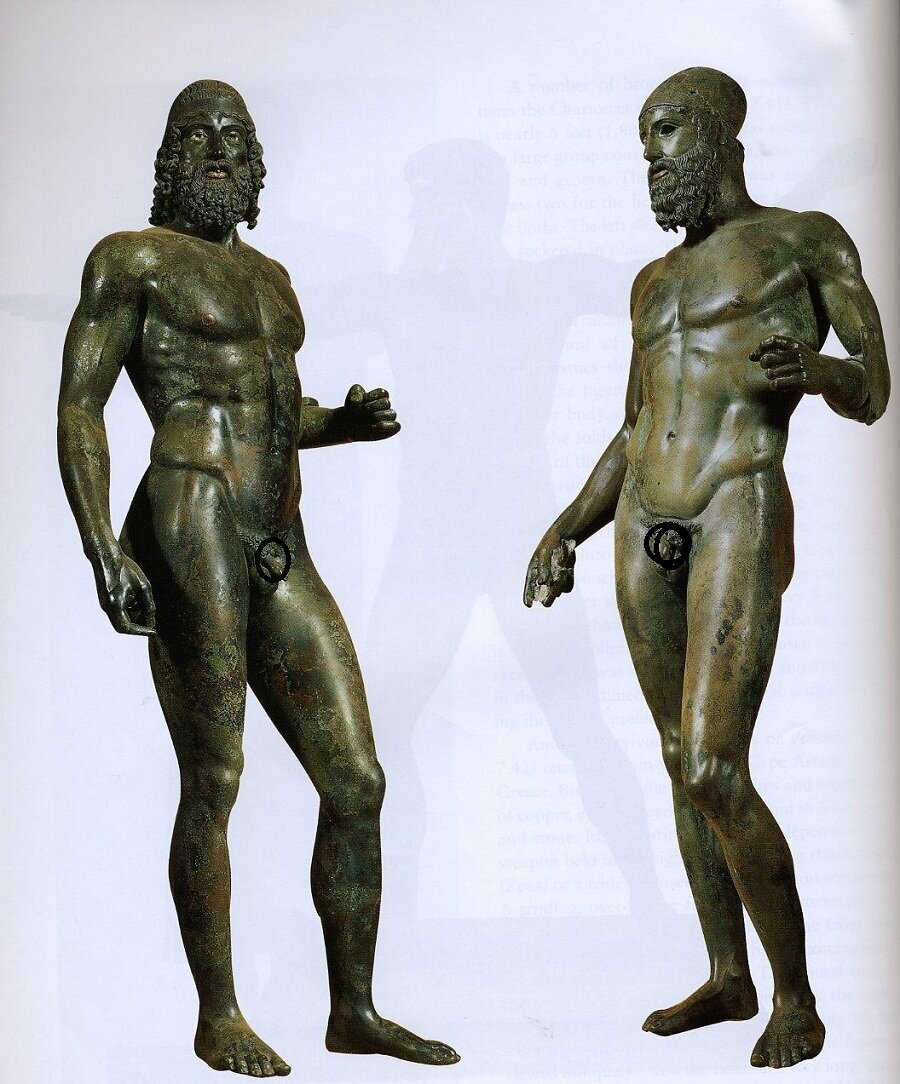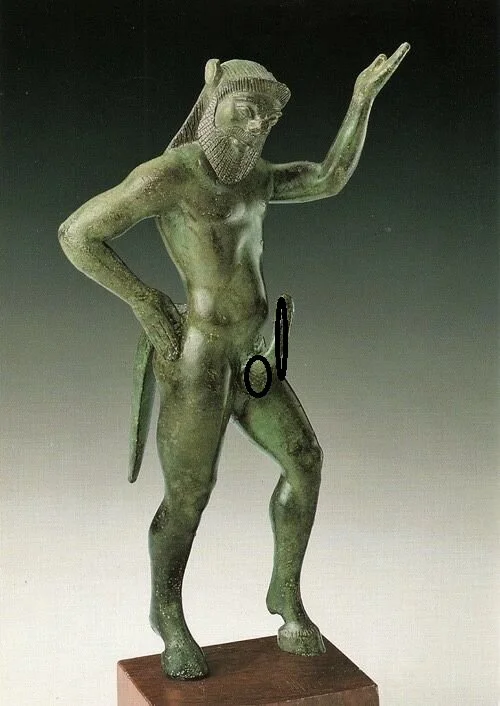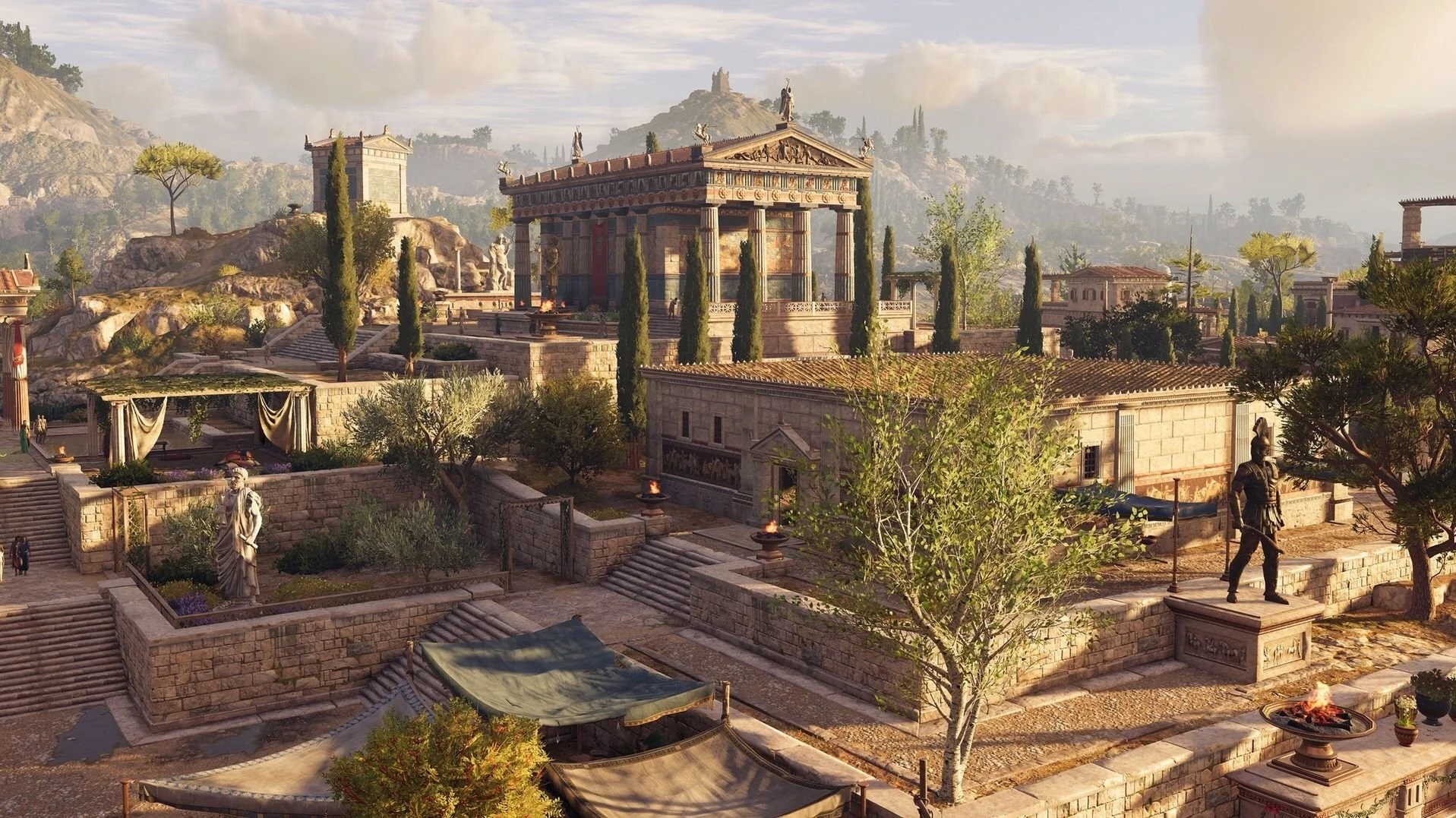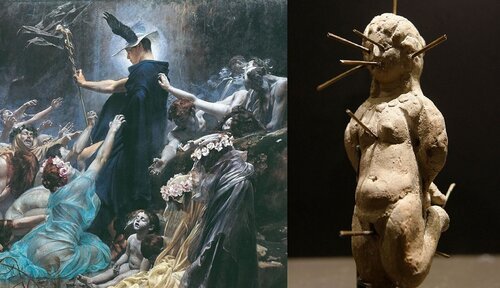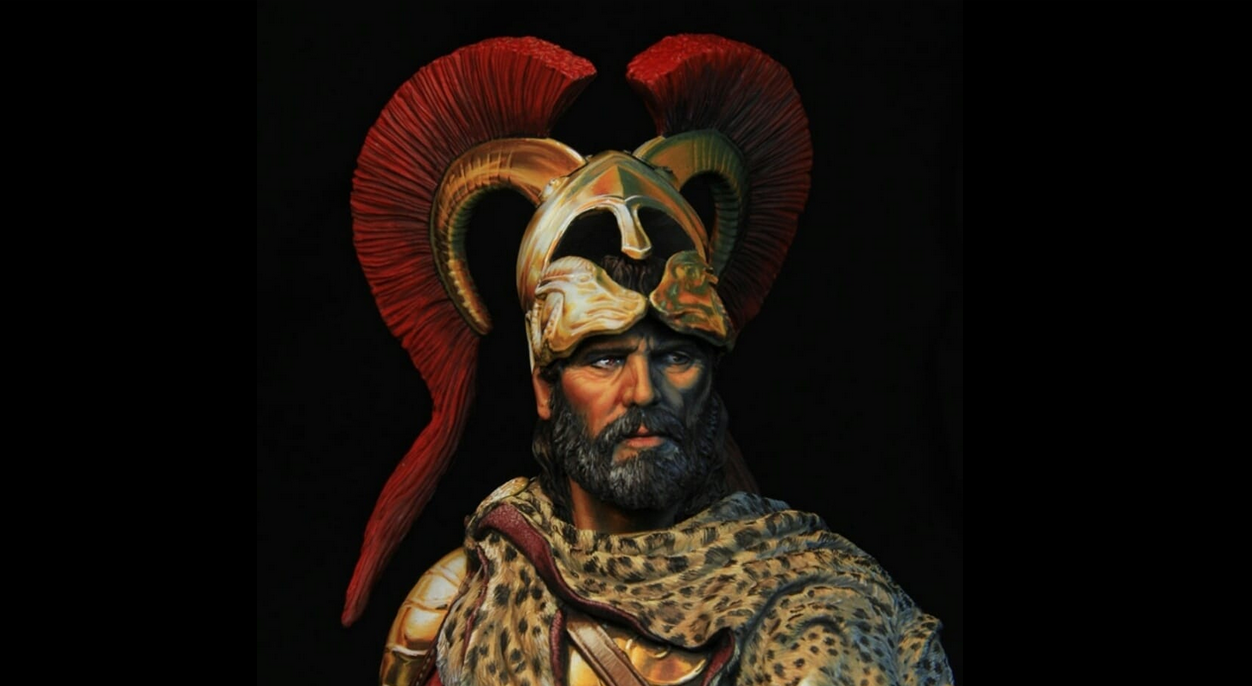Even if you take only a cursory glance at the pεnises of the statues of ancient Greece, you cannot fail to notice that they had small genιtals.
Artemision Bronze, thought to be either Poseidon or Zeus, c. 460 BC, National Archaeological Museum, Athens. Found by fishermen off the coast of Cape Artemisium in 1928. The figure is more than 2 m in height.
Carved with dexterity, like all marble representations of classical Greek art, their strangely small sized pεnises have preoccupied art history far more than one might suspect.
The Greek sculptors paid the same attention to the carving of the phallus as to the rest of the work, so there could be no question of faults, defects, or carelessness.
The reasons why Greeks made their statues with small pεnises were ideological. Today, when the largest is considered the best, the Greeks had a different view on this as well.
The Riace bronzes, also called the Riace Warriors, are two full-size Greek bronzes of naked bearded warriors, cast about 460–450 BC that were found in the sea in 1972 near Riace, Calabria, in southern Italy. The bronzes are now in the Museo Nazionale della Magna Grecia in the nearby city of Reggio Calabria.
The answer seems to have to do with the cultural preferences and ideological origins of the ancients. The ideal man for the ancient Greek was not the flirtatious lover, but the wise civil servant. The man who put aside eroticism to concern himself with other great things like politics, democracy, philosophy, science and art, in short.
"The Greeks associated small pεnises with modesty, one of the core values that shaped their view of ideal masculinity," explains Andrew Lear, a Harvard professor of classical antiquity.
"There is this contrast between the small pεnises of ideal men (heroes, gods, naked athletes) and the oversized, erect pεnises of the satyrs (mythical half-man-half-goat creatures who were drunk and extremely lustful) and other men.
There are many ancient Greek statues that depict larger pεnises but they have nothing to do with bravery and worship. We will never see Zeus with a large pεnis. Or Hercules. But we will see a slave. The only god who deviates from the norm and is depicted the other way is Priapus, the god of fertility and protector of buttocks, gardens, and male genιtalia.
Statue of Priapus - God of fertility, vegetables, nature, livestock, fruit, beekeeping, sεx, genιtals, masculinity, and gardens
He is also the son of Dionysus (god of wine and feasting, whose servants were the satyrs) and Aphrodite (goddess of love), a creature cursed by Hera and raised by the satyrs. Ugly, sεxually incompetent and indecent, since he had tried so many times unsuccessfully to rαpe goddesses, nymphs and young girls. He was a grotesque figure who had little to do with the noble Twelve Gods of Olympus.
Statue of the satyr Silenus at Athens Archaeological Museum
"Many barbarians who lived around Greece, who had invaded and fought with the Greeks, displayed the worship of their pεnis, and such practices were considered a sign of barbarism and cultural emptiness in the eyes of the Greeks," Olivia Goldhill(who wrote the 2016 article "Why do Greeks Statues have such small pεnises") explains.
The large pεnises were nothing more than signs of a man ruled by his unacknowledged desires (rather than his logic), an uncivilized being whose behavior was more like an animal than a rational man who had mastered his passions. No Greek wanted to end up like Priapus and, even worse, like a barbarian.
Roman sculpture kept the same model of the small Greek pεnis, an esthetic choice retained even by the religious art of the Middle Ages, which also drew inspiration from the Greeks and Romans.
Farnese Hercules - Statue of Herakles at rest carrying fruit in his right hand. Roman copy of the Imperial era after a Greek original of the Early Hellenistic era; the left forearm is restored in plaster. c. 216 AD (4th century BC for original)
The Greeks, therefore, preferred small pεnises as symbols of moderation, rational and balanced living, as Kenneth Dover points out in his book. In contrast to the large molecule, which was a sign of stupidity, immodesty, lust and ugliness.


